ART SG’s first salvo
 50,000+ attendees welcomed the long-anticipated Art SG, with visitor tallies surpassing expectations if not high-end sales. Image/AF
50,000+ attendees welcomed the long-anticipated Art SG, with visitor tallies surpassing expectations if not high-end sales. Image/AFAfter several postponements and delays, Art SG 2023 finally took center stage in its bid to compete with chief rival Hong Kong as Southeast Asia’s most prominent contemporary art market. More about this later, but for now, suffice to say that Singapore proved that it has the infrastructure, government support and financial clout from both the public and private sectors to take a serious run at the top dogs in the region at some time in the near future.
For the inaugural fair, a strong contingent of 160+ international galleries exhibited at the iconic Marina Sands Convention Centre from January 12th to the 15th. Another fifty galleries and several local art organizations offered a curated exhibition at the annual S.E.A. Focus show held at Tanjong Pagar Distripark, itself a promising warehouse space near the sea port offering unlimited potential as an art district with its massive spaces, unique industrial feel, and easy access just minutes down the road from the marina and financial districts. The latest iteration of the Singapore Art Museum (SAM) also opened at TPD recently, featuring its new venue that has been hosting several experimental events as part of the Singapore Art Biennale “Natasha” since October 2022.
The Singapore art market has long been considered one of the fastest-growing markets in Asia. It is known for its vibrant contemporary art scene with a predictable focus on Southeast Asian art. In addition to local collectors, there is also a growing number of regional and international investors who are taking an interest in the Singapore art market.
Art SG showcased a diverse range of works by emerging, established and master artists from around the world. Included were mega-galleries Gagosian, Zwirner, and Pace who’ve operated major presences in Asia for many years. Also representing the western art scene were P.P.O.W., Lehman-Maupin, Cadri, White Cube, Sadie Coles, Victoria Miro, and other prominent US, UK, and European galleries. Most of the heavyweight operations from SE Asia to the opportunity to mount impressive booths as this event clearly offered them home court advantage.
For a comprehensive list of the participating galleries and artists, visit the outstanding coverage by artsy.net.
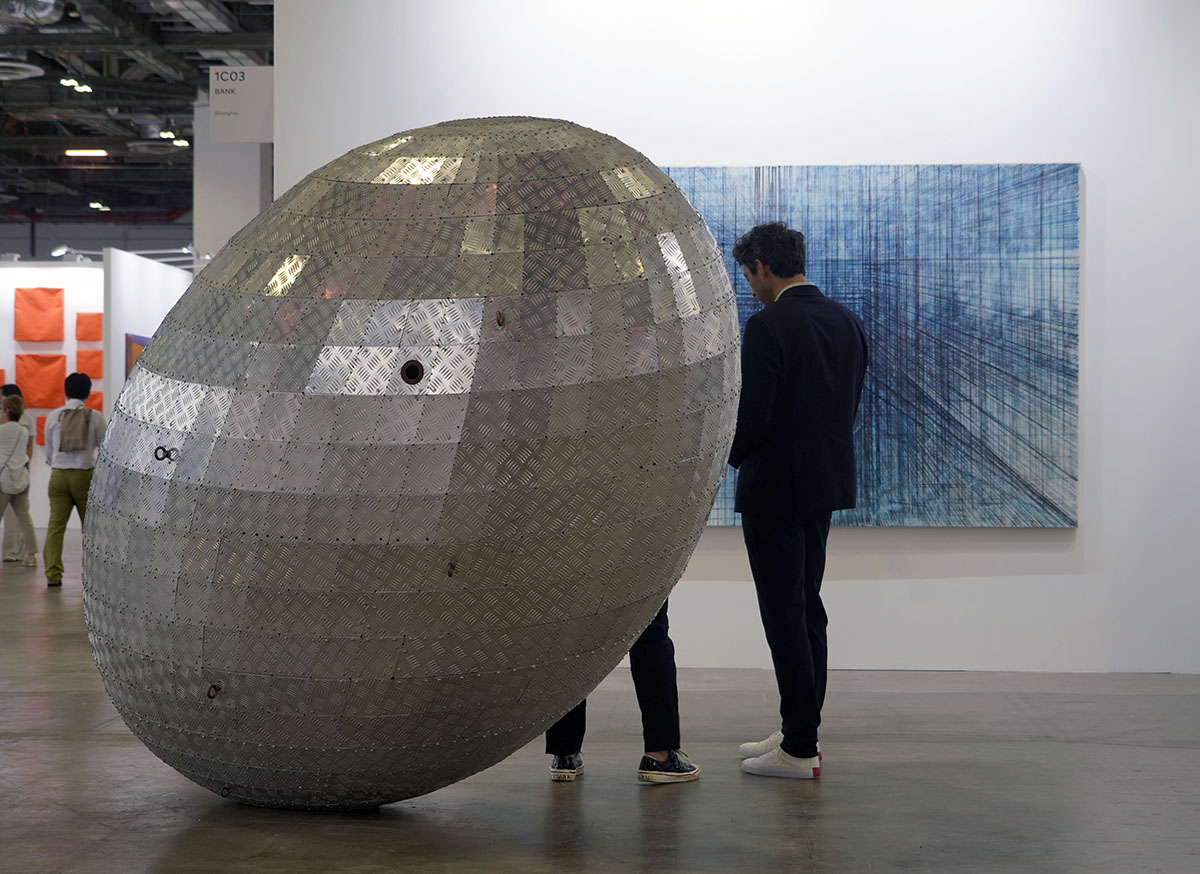 Tawatchi Puntusawasdi sculpture @ BANK of Shanghai, Art SG. Image/AF
Tawatchi Puntusawasdi sculpture @ BANK of Shanghai, Art SG. Image/AF
General Impressions
Art SG 2023 felt like a relatively “safe” show compared to recent Frieze or Basel events, most likely an acknowledgement of the traditionally more conservative nature of the host market. There were no dripping condoms, aids-infected vials of blood or shopping carts filled with gravel masquerading as fine art. To counter the absence of cringe-worthy contributions, there were plenty of technically strong works in all genres. In general, works seemed refined and polished but in a good way. The overall quality of presentations was a welcome relief after a seemingly endless stream of exhibitions featuring cartoonish characters and tired slogan dumps over the past few years.
Yes, there were still the occasional soft drink and commercial logos from young artists who failed to understand that this rarely works anymore, especially in a place like Singapore that was more than willing to flaunt its excessive wealth and couldn’t care less — at least for January — about overt commercialism or superpower hegemony.
Very few of the major international galleries curated programmed exhibits. The trend instead was to sample the market with a potpourri of options, with many choosing to present representative work from their extensive stables rather than focus on any over-arching booth theme. At times, these branding exercises gave parts of the fair a decidedly random, incoherent feel (not unusual for art fairs). Nevertheless, the quality of work itself was excellent, with the overall consistency of quality rising to save the show. It was a welcome gauge of where the post-pandemic Asian market sits in terms of contemporary work and its fledgling new media components. That said, there were no notable surprises, for better or worse, save for the mildly surprising prominence of technology-based presentations of which the Asian market is particularly fond.
 Edited version of Lu Yang's controversial Electromagnetic Brainology. Image/AF
Edited version of Lu Yang's controversial Electromagnetic Brainology. Image/AF
Of Special Note
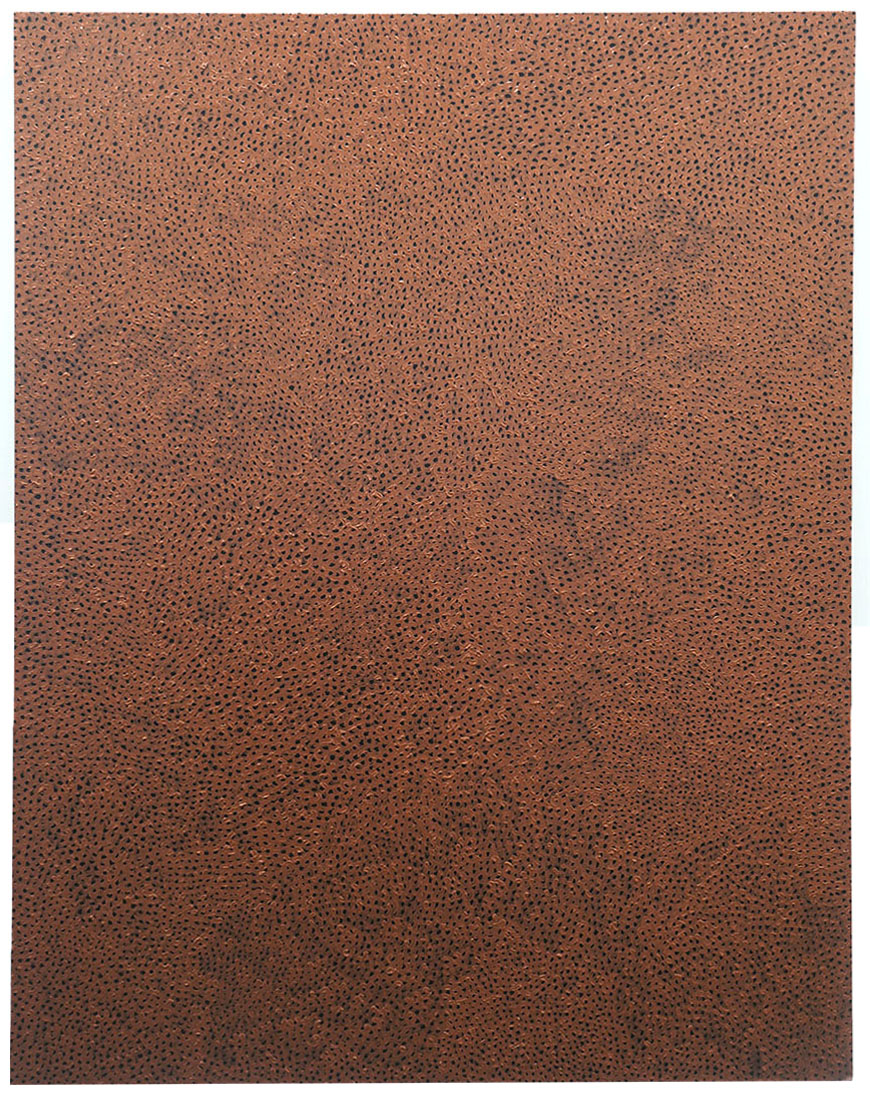 Yayoi Kusama work from the Infinity-Nets Series @ David Zwirner Gallery, Art SG 2023. Image/AF
Yayoi Kusama work from the Infinity-Nets Series @ David Zwirner Gallery, Art SG 2023. Image/AF
Richard Koh has promoted Southeast Asian art since 2005 and currently runs spaces in Singapore, Kuala Lumpur and Thailand. Koh was one of the few Singapore-based galleries to present in both Art SG and S.E.A. Focus, where he exhibited the gallery’s extensive stable of emerging and established artists whose common threads are their dedication to clear and thoughtful messaging and intent. Reportedly, among the works sold at Art SG were sculptures by Faris Nakamura and Natee Utarit, as well as paintings by Zelin Seah, Trong Gia Nguyen, Wah Nu, Qiren Hu and several others.
The Columns Gallery of Singapore & South Korea exhibited several intricate acrylic works from the Internal Rhythm series by South Korean artist, Tae Ho Kim. What appear to be minimalist and monochromatic from a distance expand into colorful three-dimensional labyrinths of cavities and undulating surface layers and crevices rendered in painstaking detail after applying seemingly dozens of layers of paint before clawing and scraping layers backwards to expose the colored underlayers. Also shown were important pieces by Kim Giuline, Han Yajuan, Ha Chong-hyun, and a marvelous copper-plated sculpture by Um Tai Jung.
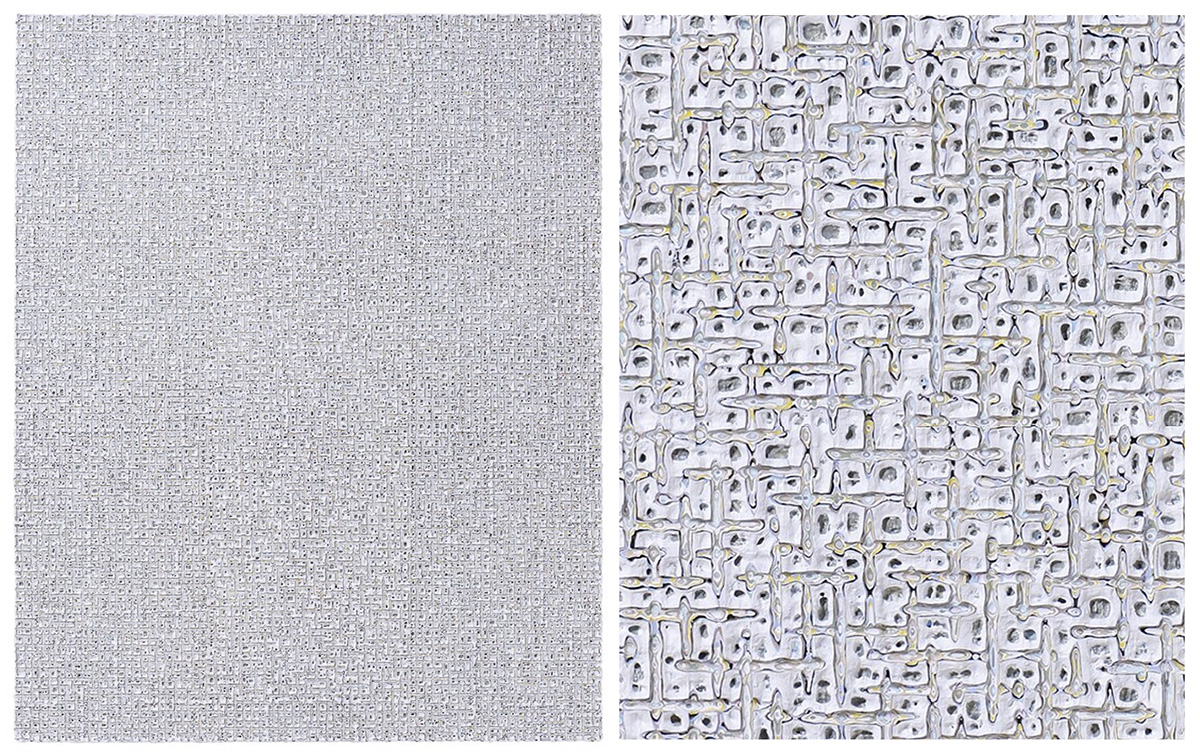 Tae Ho Kim, Internal Rhythm 2020-79 @ The Columns Gallery, Art SG. (L-Full, R-Detail) Images/AF
Tae Ho Kim, Internal Rhythm 2020-79 @ The Columns Gallery, Art SG. (L-Full, R-Detail) Images/AF
Gajah Gallery of Singapore and Indonesia featured interesting sculptures by the late Ashley Bickerton, an American painter and sculptor who spent the final years of his life living and working in the region while battling a terminal illness, most recently in Bali until the time of his death last year. Also shown were the whimsical works of Yunizar, Li Jin and Jogen Chowdhury, as well as the sexually charged graphic works of U GAK Murniasih that generated several sales. The highly respected Gajah Gallery specializes in bringing Asian contemporary art to the international marketplace.
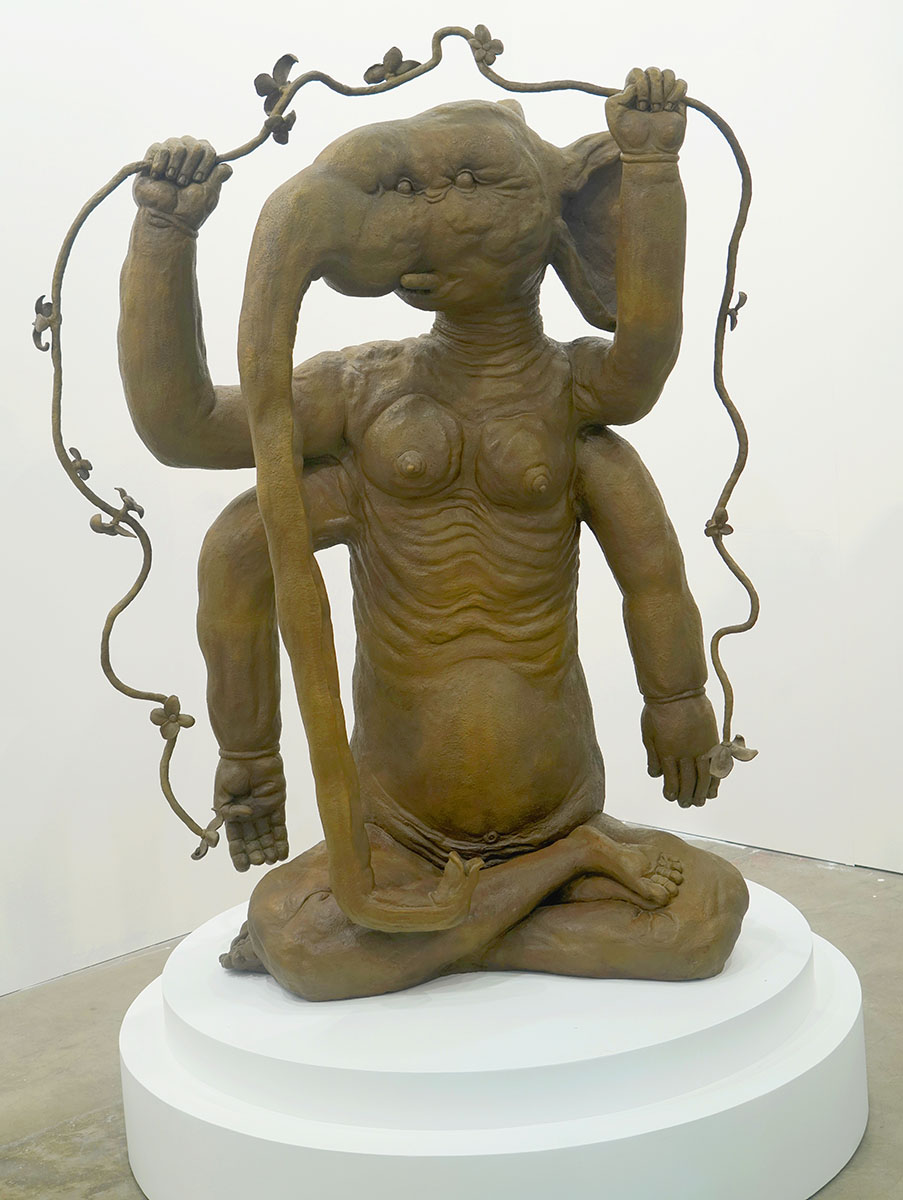 Elephant Man in bronze by Jogen Chowdhury @ Gajah Gallery, Art SG. Image/AF
Elephant Man in bronze by Jogen Chowdhury @ Gajah Gallery, Art SG. Image/AF
BANK of Shanghai is a frequent participant in fairs throughout China, SE Asia, and leading international fairs, including Frieze, Art Basel, and NYC’s Armory Show. Always at the forefront of trends, for their Art SG booth, BANK exhibited an energetic & eclectic presentation of Asian stalwarts, including Michael Lin, Lin Ke and LuYang, the architectonic works of Michael Najjar and Tan Song, and a rugged yet surprinsgly sensitive and gravity-defying aluminum sculpture by Tawatchi Puntusawasdi (See image near top of article.)
London’s Annely Juda Fine Art gallery featured an entire wall of small David Nash sculptures carved from a variety of woods. Also shown were important works by David Hockney, Katsura Funakoshi, Suzanne Treiste, Naum Gabo, and Theo van Doesburg.
Former Sotheby’s director Ben Brown and his eponymous gallery presented numerous stellar works by represented artists, including a Brillo Box sculpture and a collage in the style of Klimt by Vic Muniz, several works by both Enoc Perez and Gavin Turk, and a blue table piece titled Table IKB by Yves Klein.
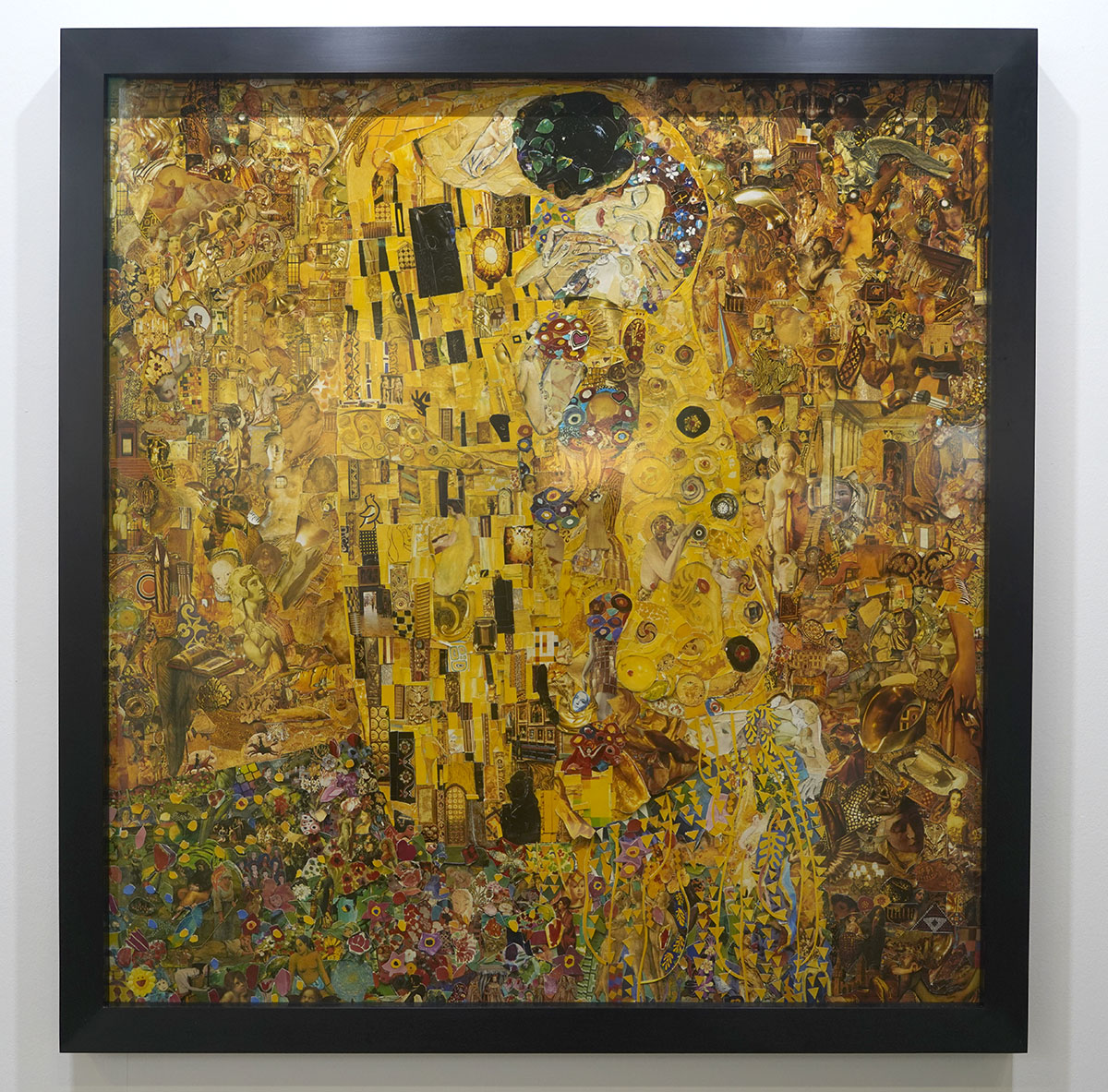 Vic Munoz collage in style of Klimt @ Ben Brown Fine Arts, Art SG. Image/AF
Vic Munoz collage in style of Klimt @ Ben Brown Fine Arts, Art SG. Image/AF
Among other notable galleries, Pace Gallery showed a strong blend of regional and international artists, included Lee Kun-Yong, Yin Xiuzhen, Kohei Nawa along with Matthew Day Jackson, Glenn Kaino, and an early 60s collage by Louise Nevelson.
David Zwirner Gallery exhibited a collection of works by Thomas Ruff and Wolfgang Tillmans. Also displayed were a couple of works from the Infinity-Nets series by Yayoi Kusama, works that often evoke a similar response for many observers as some of the black or red Rothko series (See image earlier in article.) The renowned Japanese artist seemed rightfully ubiquitous throughout this fair, and who could forget the Kusama-inspired theme at the nearby Louis Vuitton showcase?
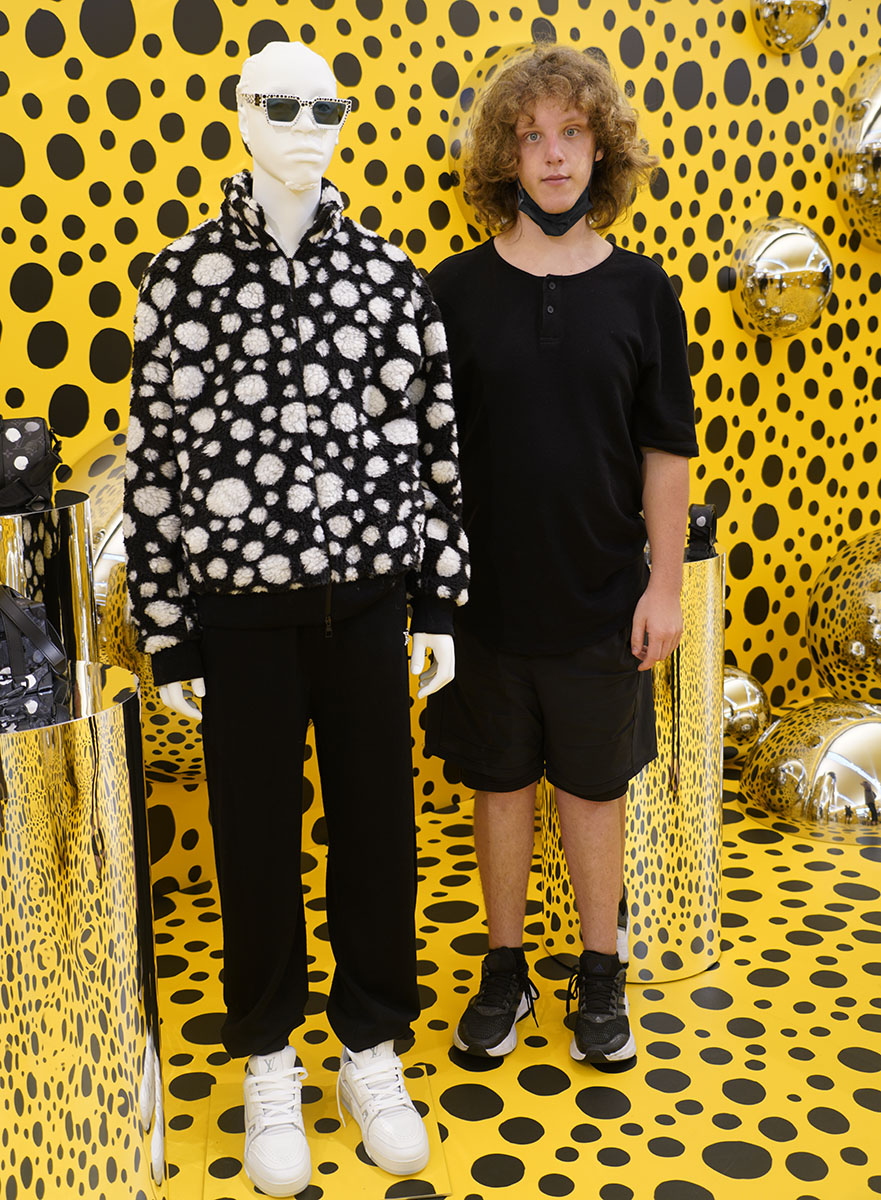 Emerging artist Shawn Sebastian at the Kusama-Vuitton presentation in Marina Sands, site of Art SG. Image/AF
Emerging artist Shawn Sebastian at the Kusama-Vuitton presentation in Marina Sands, site of Art SG. Image/AF
Hive Center of Contemporary Art from China exhibited a work from Yu Linhan, a Chinese artist living in Berlin that we’ve been hoping to catch up with for quite some time. The acrylic, photographic, and mixed-media work was #5 from the artist’s series entitled, “What if a tree falls down in the forest?”
 Yu Linhan's What if a tree falls down in the forest #5 @ Hive, Art SG. Image/AF
Yu Linhan's What if a tree falls down in the forest #5 @ Hive, Art SG. Image/AF
Also noteworthy for it’s strong presentation of renowned 20th century masters was Madrid’s Galeria Cayón, including works by several European masters and Venezuelans Rafael Soto and Carlos Crus-Diez. Uruguay compatriot, Marco Maggi, was represented by one of his trademark intricate paper works in yellow on white. It was a pleasure to see some unexpected Latin American representation in SE Asia, but in our view there wasn’t nearly enough given the current volume of excellent contemporary work originating from the continent.
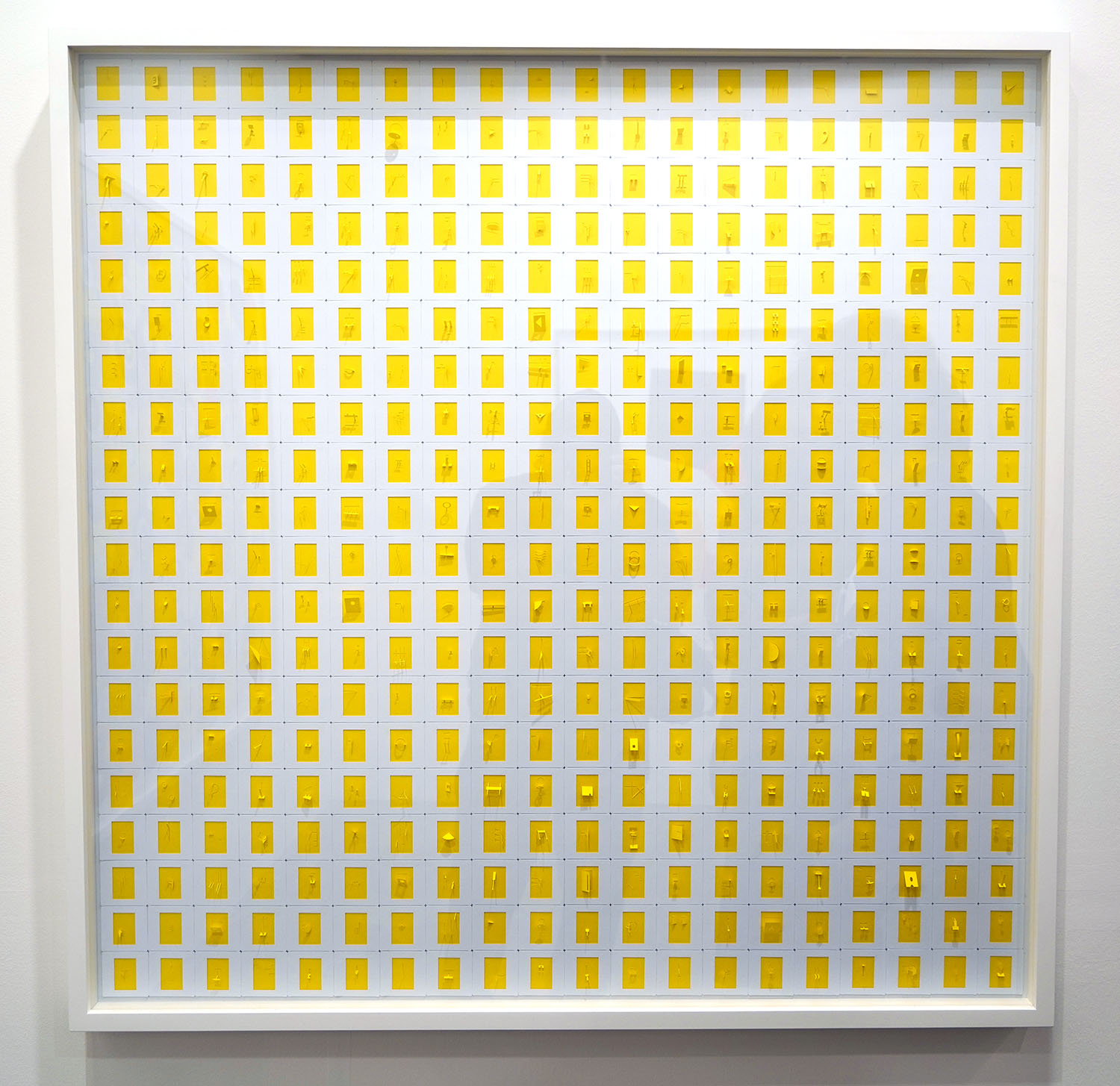 Uruguayan artist, Marco Maggi, with a work on paper @ Galeria Cayón, Art SG. Image/AF
Uruguayan artist, Marco Maggi, with a work on paper @ Galeria Cayón, Art SG. Image/AF
What makes SE Asian art so attractive to regional and international collectors?
Currently, Asian art is a broad and diverse field encompassing a vast range of contemporary styles, techniques, and themes. The uniformed might still equate Asian art with the cloning of western masters on assembly lines, pastels painted on rice paper, or soft works imprinted on bamboo folding fans featuring gardens, historical figures and songbirds. In recent years the region has produced several international superstars who transcended those traditions and set the stage for new generations of cutting-edge Asian artists, many of whom have reached the pinnacle of their genres. Nevertheless, there are certain underlying features that are still associated, rightfully or otherwise, with Asian contemporary art:
- Cultural identity: Asian artists frequently explore their cultural heritage and identity by incorporating elements of traditional art forms, materials and methods — including delicate ink works, calligraphy, and collage — into their contemporary practice. As the artists continue their searches for personal meaning and identity within that broader culture, regional collectors also seem to search for connections, inclusion, identification, and representation of themselves through that art.
- Use of new media and technology: I have never seen such a widespread acceptance and utilization of new technologies and techniques, including digital media, video, virtual reality, projection, 3D immersion and interactive installations to explore contemporary themes and issues. Not only is it widespread, it is also unique, entertaining, and most importantly for this writer, it’s actually utilizing the technology to enhance the visual art experience rather than simply using it because it’s trendy.
- Collaboration and interdisciplinary approaches are also common, with many artists working together across different media and disciplines to create new forms of expression individually and in small groups. While not unique to the region, there is a clear a trend of younger artists teaming up to support each other and draw attention through a larger entity, not unlike the United Kingdom's YBA movement in the early 90s.
- Political and social commentary: Despite lingering political instability in the region, many artists have slowly become more emboldened to address political and social issues in their work, specifically studies on human rights, environment concerns, and the SE Asian version of cultural displacement.
- Regional and international influences: Asian Contemporary art is influenced by both regional and international art movements, with many artists merging broader contemporary art practices to create works that reflect their unique cultural perspectives and references in more of a global context.
 Singapore has the facilities, local support, and financial clout to host world-class art fairs. Image/AF
Singapore has the facilities, local support, and financial clout to host world-class art fairs. Image/AF
Singapore’s art scene beyond ART SG and S.E.A. Focus
Singapore has a vibrant and thriving art scene, with several gallery districts where visitors can explore exhibitions and shows by local and international artists. While the Singapore government is investing heavily in arts and culture, many on the street believe that some of the best initiatives have been developed by the private sector, especially individual artists, artist-driven cooperatives, and private galleries.
We did not have time during our four-day trip to revisit some of the following areas. A few galleries closed during the pandemic while others moved since our last visit. As public institutions relocate or develop additional spaces across the city, galleries and artist studios are also shifting from district to district, partly to remain as close as possible to the art epicenter, but also due to gentrification that inevitably drives gallery and studio costs beyond reach for many artists and smaller galleries.
Gillman Barracks is a former military barracks transformed into an arts cluster, home to over a dozen galleries and exhibition spaces. Located in the heart of the city, Duxton Hill is a hub for contemporary art galleries and boutiques. Marina Bay is home to several high-end commercial galleries, as well as the ArtScience Museum and the iconic Marina Bay Sands resort, host of Art SG 2023. The Orchard Road shopping district has traditionally hosted several modern and contemporary art galleries, and Bukit Timah is a residential area with several smaller galleries.
While definitely not as concentrated as the art districts of Chelsea or Brooklyn in NYC, London's established enclaves on both its west and east sides, or the former warehouse district of Wynwood in Miami, it is important to remember that Singapore’s art districts are easily accessible and relatively close to each other. A diligent admirer can track down most of them in a day or two.
Now that the Singapore Contemporary Art Museum (SAM) has established itself in Tanjong Pagar Distripark with lofty plans for future growth, I predict many art galleries and institutions will follow suit. The complex offers wonderful spaces with an edgy urban feel, expansive walls with high ceilings, modern fittings, and great loading and storage facilities for even the largest installations. There’s already a nice wine and spirit bar named Angra with room for plenty more. If rental prices don’t become egregious, I can see this complex becoming a major venue for Singapore’s art scene and accompanying nightlife in the near future.
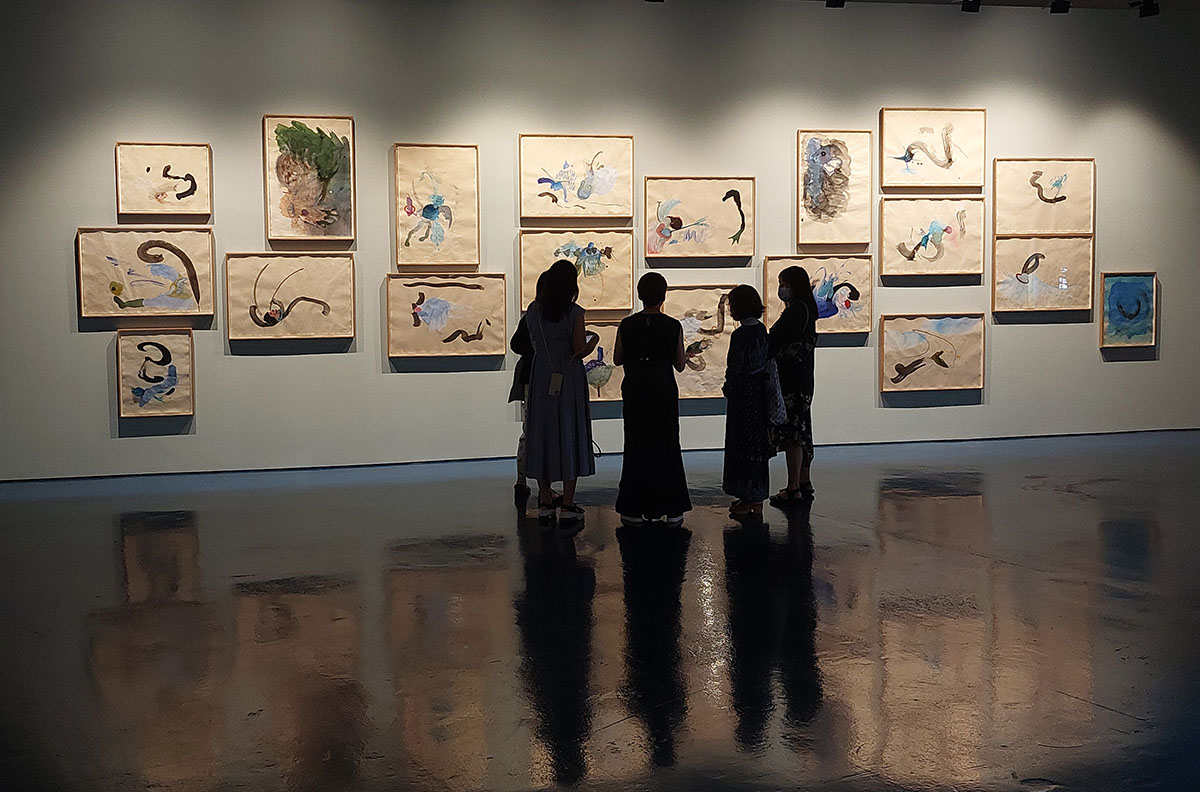 One of the ongoing exhibits of the Natasha Singapore biennale at SAM. Image/AF
One of the ongoing exhibits of the Natasha Singapore biennale at SAM. Image/AF
Other Singapore galleries to frequent regularly:
Opera Gallery is a landmark gallery in Singapore with satellite spaces worldwide. It works extensively in the secondary market with regular placements of modern and contemporary masters.
Sundaram Tagore operates leading galleries in New York, London, and Singapore. It attracts some of the finest artists and most astute collectors to its Gillman Barracks space.
TAKSU is a regional gallery with venues in Singapore and Kuala Lumpur. It features emerging and established local, regional and international artists
OTA Fine Arts operates several gallery spaces throughout SE Asia, including Tokyo, Shanghai and their Gillman Barracks location in Singapore. At Art SG, OTA presented works by Chen Wei, Maria Farrar, Tsuyoshi Hisakado, Chris Huen Sin-Kan, Hilmi Johandi, Yayoi Kusama, Guo-Liang Tan, Nobuaki Takekawa, Ming Wong and Youada.
WOAW Gallery was founded by collector and designer, Kevin Poon. The gallery offers entertaining, outside-of-the-box programming with a lean toward work that references the zeitgeist pop culture. Their Art SG booth featured works by four of the gallery’s represented artists: Americans Charlie Roberts, Drew Englander and James Goss along with Jon Burgerman of the United Kingdom.
Art Porters Gallery features work by emerging and established regional and international contemporary artists.
Mizuma Gallery at the Gillman Barracks features contemporary work in all media by Japanese and SE Asian artists. They offered an excellent presentation at this years S.E.A. Focus show.
Cuturi Gallery is a contemporary gallery that featured many of its represented artists at Art SG.
Yavuz Fine Art at Gillman Barracks and Fost Gallery are contemporary art galleries that specialize in modern and contemporary Southeast Asian and international art. They feature a diverse range of talented artists, including everything from kitsch and pop to sophisticated abstract and figurative works in several media types.
STPI - Creative Workshop & Gallery is a contemporary non-profit art space that specializes in collaborations with emerging contemporary local artists.
Please remember that this is by no means a complete or exhaustive list. Dozens of other contemporary art galleries make significant contributions to the development of the local contemporary art scene. If you have some in mind that absolutely must be here, please contact us and we will expand the list.
Also showing in Singapore during Art SG 2023 was Patricia Piccinini’s “We are Connected” installation of sculptures at the Marina Bay Sands ArtScience Museum just steps from the convention center where the main Art SG was held.
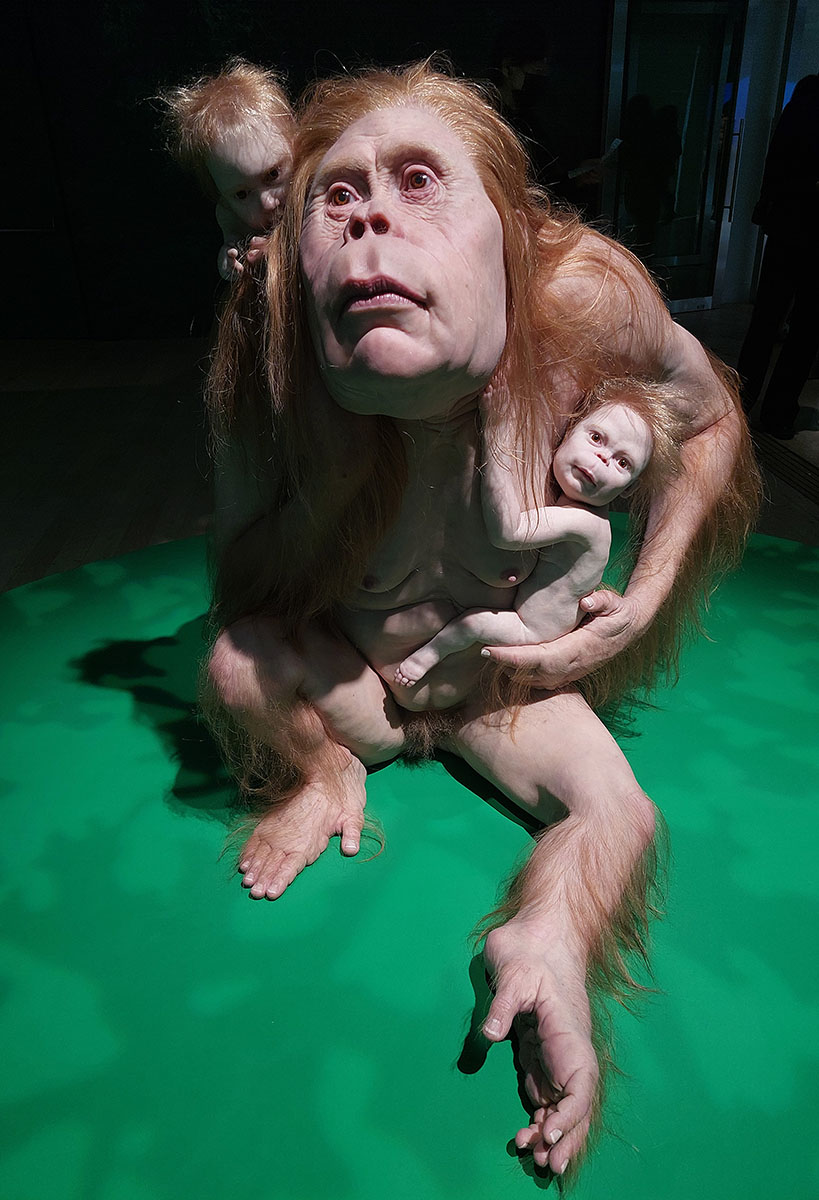 Featured work in the lobby of Patricia Piccinini’s “We are Connected” installation @ ArtScience Museum. Image/AF
Featured work in the lobby of Patricia Piccinini’s “We are Connected” installation @ ArtScience Museum. Image/AF
Can Singapore compete with Hong Kong as the art jewel of SE Asia?
And finally, the burning question. It is difficult to predict a future wherein any single Asian city is an unchallenged leader. The region is simply too large, too diverse, and too populated with more than ample disposable incomes for art collection. Hong Kong has a long history as a hub for the arts in Asia, with a rich cultural heritage and a strong network of existing local and international galleries, institutions, and collectors. There are also tax advantages in Hong Kong for both the primary and secondary markets, and the costs of operation are generally lower albeit still not cheap. Hong Kong’s proximity and natural pipeline to the massive mainland market doesn’t hurt its position. And lest we forget Seoul. The home of the only Frieze-affiliated fair currently held in SE Asia has a major local market of its own.
Nevertheless, Art SG and the wider Singapore art market have established themselves as major destination in the region, and they have boldly announced their intentions to become a worldwide player as well. It is certainly possible that the city-state will continue to emerge as another influential art hub for Asia, especially if the recent influx of wealth from China and beyond continues indefinitely. The future will ultimately depend on various factors, including economic conditions, political stability, and the grassroots development of supply, demand and fulfillment. In short, the success of any art hub is determined by the quality and diversity of the artworks being produced and exhibited combined with the level of support and investment from collectors, institutions, and the public. Singapore ticks all of those boxes, as does Hong Kong, with the latter holding a decided advantage of being the first to develop strong ties with the extended international art world outside of Asia.
As global financial markets continue in a phase of uncertainty, to be determined is whether cornerstone international galleries will support an augmented “circuit” of Asia-based major annual fairs, including Hong Kong, Singapore, Seoul, along with a large number of slightly more regional and less international fairs across mainland China and the ASEAN nations. These are costly enterprises, especially for those from the other side of the globe. Galleries must pick and choose the fairs that best serve their interests, with all but a handful unable to participate in all events.
Other factors to consider for major western galleries going forward were readily apparent at Art SG, namely, a predominance of sales at lower price points compared to the behemoth strikes that have become commonplace at the Basels and Friezes of the international circuit. There also remains a clear preference of regional collectors — especially at the mid-range of the market — to “support their own” by concentrating private and public collections around the works of their locally renowned artists. Could this be reason for pause, especially for galleries with no permanent footprint in the region? Caution may very well apply for the time being, but with 160 galleries answering the bell despite the fair's early stumbles, there seems to be no shortage of willing participants for future iterations of Art SG.
After conversing with several local artists and galleries, there seems to be a concerted effort to change the narrative, with most hoping at some point in the near future to be recognized simply as artists or galleries rather than be categorized as SE Asian artists or galleries. This is a positive sign for the future of Singapore’s art market. Historically, the most important art centers have always featured work from across the globe rather than confine themselves to only regional offerings. There is a fine line between local development and overt nationalism or regionalism. An open border approach with a give-and-take policy is healthier for all markets, including for artists and art world professionals who should prosper from newly opened markets. Ultimately, the most benefit goes to the collectors and admirers who gain exposure to a much broader selection of art.
While very few insiders envision a mass exodus of established galleries and institutions from Hong Kong or Seoul to Singapore, we strongly believe that the Southeast Asia market is already large enough to support several major art hubs simultaneously. There is no reason to feel compelled to crown a winner.
As of 2023, Singapore has plenty of enticing exhibition spaces and a quality urban infrastructure to support major fairs. Hong Kong and Seoul maintain the advantages of experience and history. Nevertheless, Art SG is a worthy addition to the SE Asia art circuit. It remains to be seen whether it will rise to the level of Basel Hong Kong and Frieze Seoul or settle into the next tier of ultra-competitive fairs throughout Asia. Public and private interest is certainly there, but success will ultimately be determined by Singapore's ability to continue to attract the finest galleries and collectors, many of whom already have similar annual fairs to support in their home countries.
 Singapore offered a city-wide art extravaganza not confined to the fair venues. Image/AF
Singapore offered a city-wide art extravaganza not confined to the fair venues. Image/AF